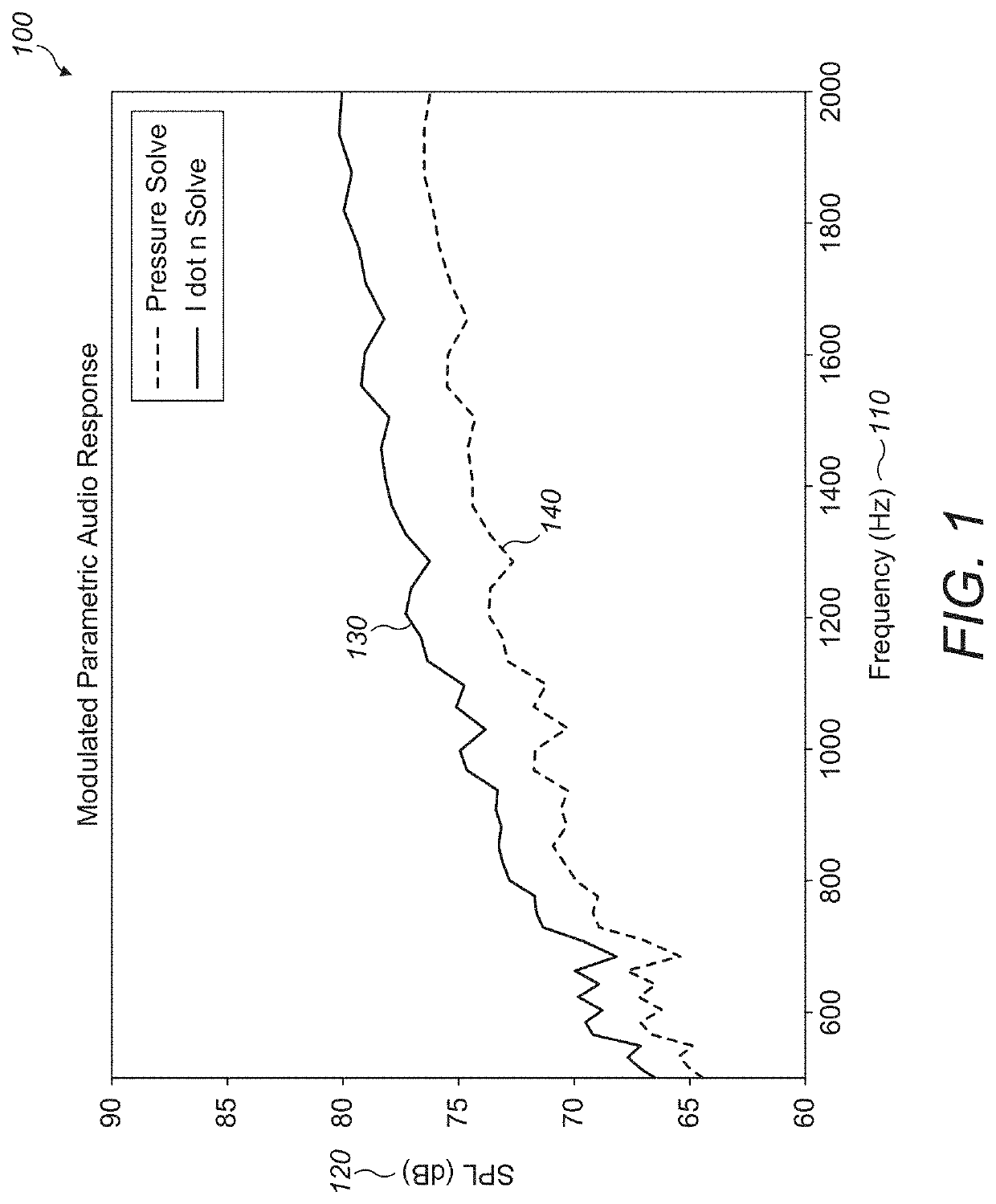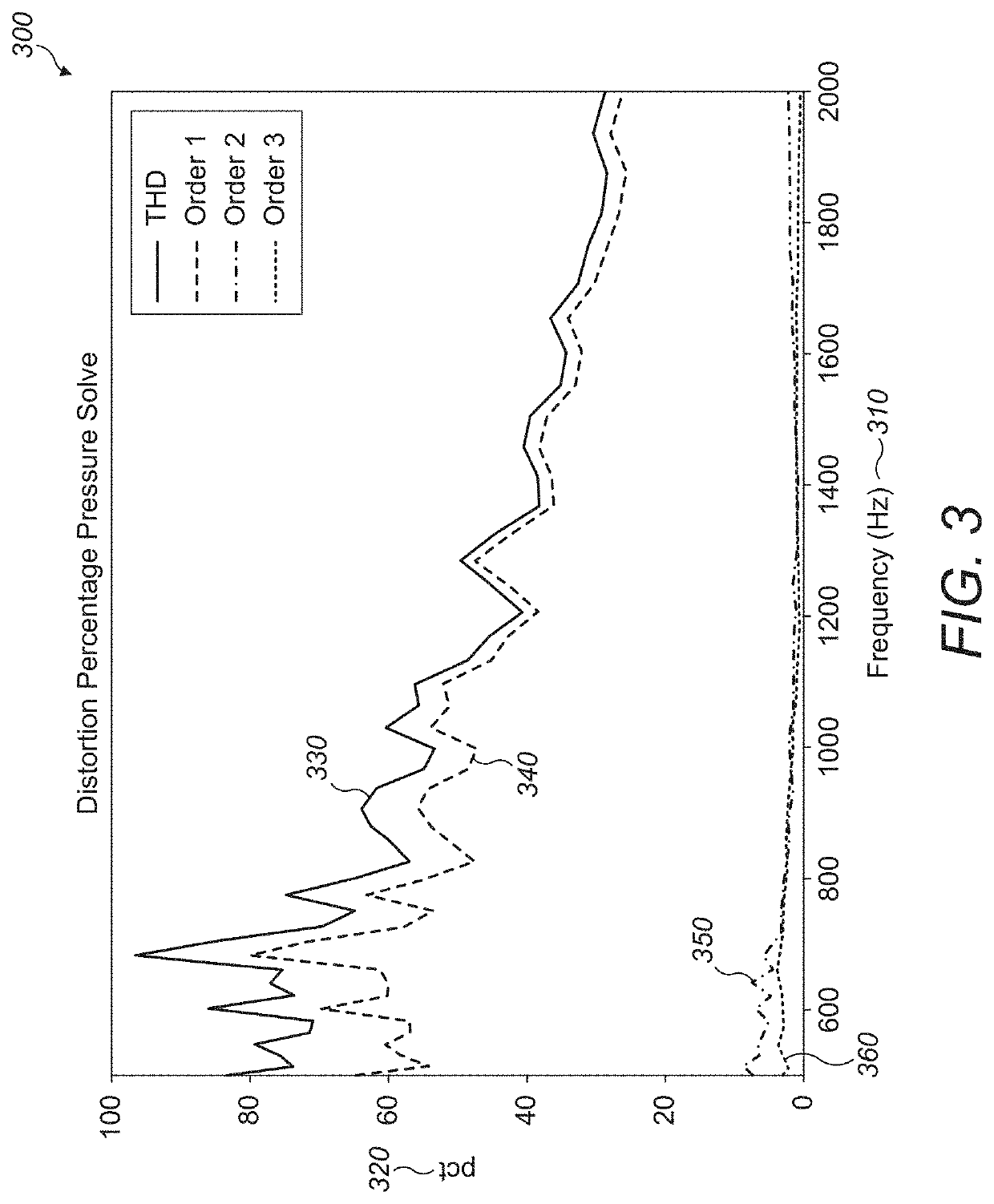Superpositions occur when linear quantities that describe
waves add together to create areas of constructive and destructive interference.
However, the
momentum and energy of the device cannot be controlled directly as it is a non-linear quantity, as well as being dependent on a number of geometric parameters.
This makes the compute required at the
transducer very small, as it only has to import complex coefficients and export sufficient data to describe its produced field.
However, the communication with these devices will scale with the number of transducers, which if relatively large will prove too much.
On top of this, the synthesis of the field produced by each
transducer must be achieved in some centralized location, which is again undesirable.
This uses extra compute power and resources to achieve low-bandwidth, but is clearly not yet optimal, as reducing
system cost must necessarily involve reducing both communication and computation to a minimum.
While a method that eliminates the dependency of bandwidth requirements on the
transducer count of the
system is needed, duplicating functionality is clearly undesirable.
In many cases, even if the
ultrasound is directed elsewhere, fringing (unintentional) fields can still cause problems.
This can
mask or distort the parametric audio and lower the quality of the experience.
The mathematical structure of the system makes it cumbersome to force solutions to respect the power limitations of the physical device, where clean solution methods often produce unphysical drive conditions.
This necessarily reduces the efficiency of the array, limiting the maximum output power available.
However, this solution does not help when the benefits of
apodization and / or multiple points are required.
Superpositions occur when linear quantities that describe waves add together to create areas of constructive and destructive interference.
Further, phased arrays of ultrasonic speakers can produce a relatively large amount of
acoustic energy which is usually directed in a specific direction or focused to a particular point depending on the application of the array.
This is counterintuitive—reducing the effectiveness of high efficiency transducers, boosts general
power output overall.
However, if a
body force model is being used to describe the interaction with a boundary, then it will not necessarily reflect reality.
Neither of these approaches sufficiently describe the phenomenon of
radiation pressure for mid-air haptic systems, as both of the simplifying assumptions are false for using acoustic
phased array hardware to generate apparent haptic forces on humans.
While this is effective in creating a haptic effect, it does not reflect the basic
physics occurring in the real system.
This AHA is now N columns by N rows and given that the number of transducer is often very large this is an equivalently large matrix, and since any solution method must invert it, with it, this is not an efficient method.
More complicated arrangements are possible.
Indeed, increasing both spacing and number arbitrarily can have a negative effect on the volume which has the desired low pressure and care must be taken to test a choose a proper arrangement of
null point locations.
Null placement, amplitude, and phase can be computationally difficult depending on the number of factors included in the modelling.
Including dynamically-changing reflections from people moving around the interaction volume, in particular, is difficult.
In particular, arrangements of many nulls may be added to a system where traditional solving may be computationally difficult.
When a new solution (xN) is generated with the method, some entries may result in driving values impossible to realize, such as greater than the maximum drive possible by the device.
Depending on the number of nullspace points, this could take significant time compared to one acoustic cycle.
This AHA is now N columns by N rows and given that the number of transducer is often very large this is an equivalently large matrix, and since any solution method must invert it, with it, this is not an efficient method.
This ensures the device is never asked to produce an unrealistic output that could result in undefined behavior.
While this is helpful to save power and ensure that transducers are used only so far as they are effective and efficient, or in situations where this symmetry produces a simple geometry independent
apodization of the
phased array to combat
grating lobe
aliasing artifacts, this is unhelpful when more output is desired from a given hardware system.
However, this difference can be confusing and difficult to manage, and breaking the symmetry can quickly eliminate all of the benefits described earlier.
In the case that the whole array amplitude must be scaled down to accommodate these
outlier elements, this small subset causes a large drop in
overall efficiency.
This means that not all of the shape of the basis set is ablated, resulting in modest changes in a minority of transducers, and large changes only in a few egregiously overdriven transducers.
It may be applied directly to the intended transducer drive, although the fluctuations in efficiency may cause excess
signal noise in the case that this is used repeatedly in a loop over time.
As this is an underdetermined problem, there is room to add more restrictions to x′.
This AHA is now N columns by N rows and given that the number of transducers is often very large this is an equivalently large matrix, and since any solution method must invert it, with it, this is not an efficient method.
This ensures the device is never asked to produce an unrealistic output that could result in undefined behavior.
However, more complicated adaptive schemes including those previously described can work around the implied
apodization of the unit, reducing the
impact of this effect.
 Login to View More
Login to View More  Login to View More
Login to View More 


